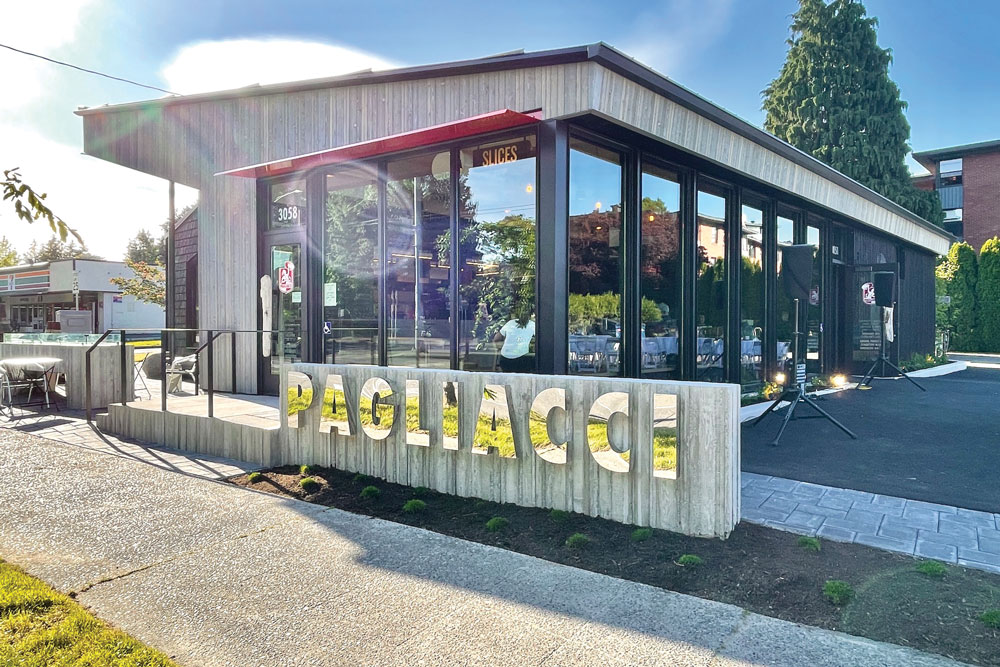Thinking of adding a by-the-slice counter or starting a slice shop? One of PMQ’s Think Tank users has the same idea and recently asked for some advice from fellow pizzeria operators with more experience in the slice game. Here’s a wrap-up of that thread, lightly edited for clarity and concision.
mrschleg79: We are located in a busy shopping plaza, and I want to take advantage of the foot traffic. How do you handle slices with a conveyor oven? Do you just start with a par-baked cheese pizza? What is your process for baking, adding toppings and reheating? And what slice are you selling? Our largest pizza is a 16″, but I do have a 20″ screen I could use.
juanwitmore: For slices with a conveyor oven, starting with a par-baked cheese pizza is quick and works well. Prepping your toppings ahead of time makes it efficient. Consider a standard 12-slice size for convenience. Give that 20″ screen a shot, but keep an eye on baking times.
Related: How to calculate bakers percent in dough-making
momenterry: We par-bake our 15″ pizza, score it, and then also cut it in sixths. We use both thin and thick crusts for options and have at least six varieties daily, displaying them (six slices on one pan) in our refrigerated display and listing them on our digital slice menu. We drop each par-baked slice back on the conveyor or, under the best circumstances, use our Turbo Chef ovens, which finish the slice in about a minute. We usually do not add toppings to slices, as we’ve found it diminishes the product and doesn’t meet our standards. From refrigeration, we usually minimally microwave slices and then finish them off in the ovens. We sell slices daily but adjust volume based on expected sales.
brad_randall: We used to sell grab & go slices at lunchtime before the pandemic, but we took that opportunity to stop—we’d priced them too low, had too much waste and could not find staff to work lunch shifts in the kitchen. Now we’re looking into restarting our slice operation but want to set it up with as little effort needed by the staff as possible.
To keep our packaging costs as low as possible, we used to wrap each slice individually with a piece of wax paper and foil. Our pan-style pizza is already “soft crust,” and the way this method steamed the slices actually kept them great over the course of an hour plus lunch service. The staff just had to grab the ordered slices, throw them in a bag and hand them to the customer. But it was a lot of work to wrap all of them before lunch started. Since it was a huge pain if we had to cook more during lunch, the staff would always cook the maximum amount, which resulted in a lot of waste on slower-than-expected days.
We looked into par-baking the pies in our conveyor oven (set up half-time for breadsticks), then finishing individual slices with a second pass-through. The quality was great, but this method results in a six-minute wait for each order. Customers might pile up in our small waiting area, and the staff has to remember which slices belong to which customer. On busy catering days, the cut table team would be annoyed with handling the little orders as they’re trying to assembly-line out the multi-pizza waves. But this would be the way we’d have to do it if we wanted to sell slices all day instead of just 11 a.m. to 1 p.m.
Now we think the way to go is by investing a bit in slice display cabinets with humidity control for our front counters. Slices will be on display, hot and ready. The customer can see what is available and point out which varieties they want. We throw the entire order in a clamshell, and they’re out the door. And cutting the occasional pizza into eight slices seems to flow better for the cut table during a lunch rush. Now we just have to decide if we want to go back to wrapping slices or invest in cabinets while running some high-amp electricity to the counters.
For more tips and ideas from experienced pizzeria operators, join PMQ’s Think Tank for free at thinktank.pmq.com













